Overpriced Merchandise
Hurting the Word Radio #2
The 1964 painting "Hurting the Word Radio #2" by Ed Ruscha is valued at $53 million. It's reportedly one of the most expensive works of art owned by Jeff Bezos.
image source: google arts and culture
The value surprised me when I read about it, though it probably shouldn't have because sky-high valuations for works of modern art are by now, as Chuck Shepherd would have said, "no longer weird."
Even so, as the Center for Art Law notes, Ruscha created hundreds of words on canvas over the decades. How did this one get singled out to be worth so much? Ruscha himself never promoted it as special. (Nor does he directly benefit from its current valuation.)
The Center for Art Law suggests that the work's "impeccable and unimpeachable" provenance may have a lot to do with the high price tag. In an art market awash in fraud, undeniably authentic works command a high premium.
Posted By: Alex - Sat May 18, 2024 -
Comments (2)
Category: Art, Overpriced Merchandise
Balenciaga Towel Skirt
Balenciaga recently debuted a "towel skirt" that retails for $925. It's been receiving quite a lot of attention.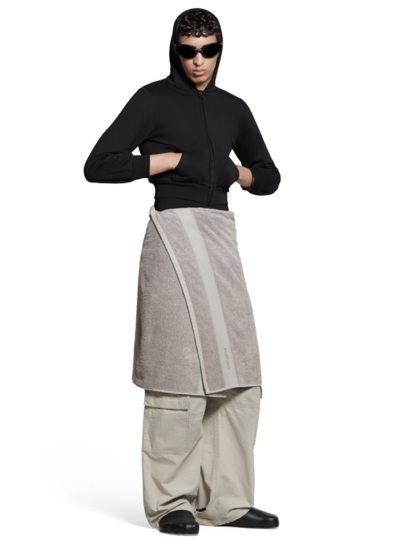
Ikea spoofed if by coming out with a "VINARN towel skirt".
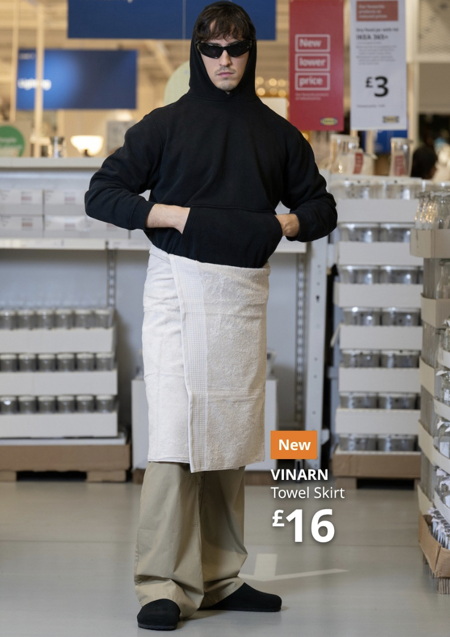
A writer for Vogue tried wearing it on her morning commute. She wrote, "It looked like I’d locked myself out of the house while doing the bins... Only the bins were across town."
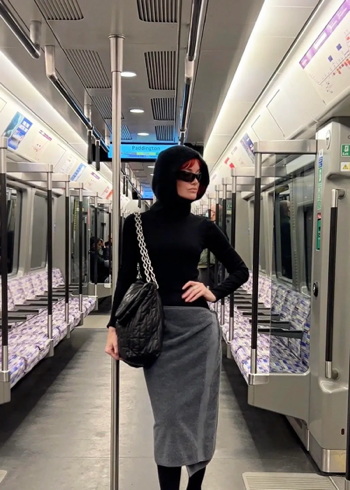
Posted By: Alex - Tue Apr 23, 2024 -
Comments (3)
Category: Fashion, Overpriced Merchandise
Ocean-Aged Wine
Ocean Fathoms promised its customers truly superior wine (for the price of $500/bottle) based on its unique method of aging the wine: in the ocean. It dropped the wine bottles to the bottom of the Santa Barbara Channel and brought them up a year later. From its website:It is also the interaction between the submerged wine cages and the set of special characteristics of the Channel Islands’ environment that gives Ocean Fathoms a superior product. We sourced the absolute best location on planet earth to age our superior wine.
One problem. It never got permits to do any of this. The Bureau of Alcoholic Beverage Control seized and destroyed 2,000 bottles of the wine.
I wonder if the ocean-aging actually made any difference. My guess is that it's just the latest wine-industry gimmick.
More info: Food & Wine
Posted By: Alex - Tue Aug 22, 2023 -
Comments (5)
Category: Inebriation and Intoxicants, Overpriced Merchandise
Destroyed Baggy Jeans
We've posted about ripped jeans before. But these take the concept to a whole new level of grottiness.You can purchase them via Bergdorf Goodman for only $2,450.

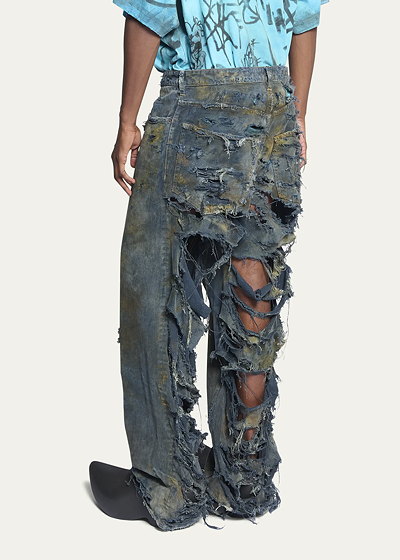
Posted By: Alex - Fri Mar 24, 2023 -
Comments (7)
Category: Overpriced Merchandise, Denim
Sato Nishiki cherries
Recently a box of 40 Sato Nishiki cherries, grown in Yamagata, sold for close to $10,000. More info from SoraNews24.com:That's $250 per cherry.
SoraNews24 also notes that, when they sampled some Sato Nishiki cherries, "our team of writers had trouble telling them apart from regular supermarket ones."

Posted By: Alex - Tue Jan 10, 2023 -
Comments (4)
Category: Overpriced Merchandise, Fruit
Eco-washed organic denim with grass stains
Gucci is selling an "Eco washed organic denim overall" that comes with a "stained-like, distressed effect." AKA fake grass stains. Yours for only $1400.
Or you could get this Orange Tartan Cotton Long Smock Shirt. Only $2600!
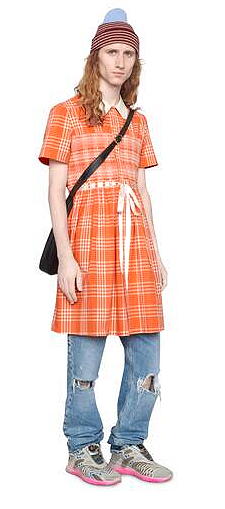
Posted By: Alex - Thu Sep 24, 2020 -
Comments (6)
Category: Fashion, Denim, Overpriced Merchandise
Banana duct-taped to wall
Artist Maurizio Cattelan’s latest piece, consisting of a banana duct-taped to a wall, sold recently for $120,000.Gallery owner Emmanuel Perrotin defended the work by saying, “It looks like a joke, but step back and look at it again, and it becomes so much more.”
The new owner will receive a certificate of authenticity. However, they’ll also be expected to periodically replace the banana (and presumably the duct tape also). Which begs the question: what did they actually buy? The idea of a banana duct-taped to a wall, apparently.
I'm curious to know how long the owner will actually bother to replace the banana. Twenty years from now, will they still be replacing it every few days?
More info: artsy.net
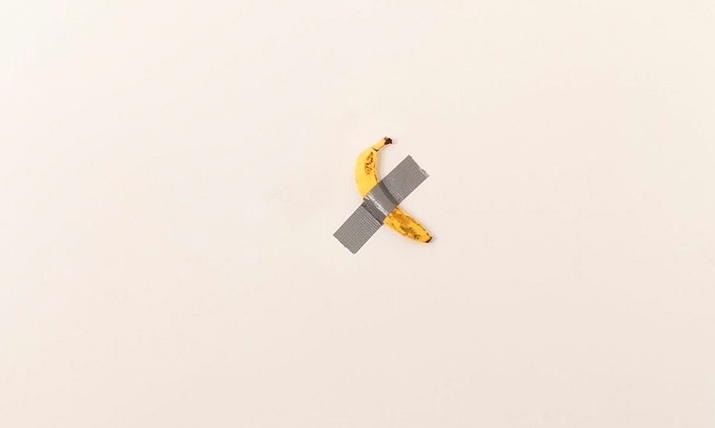
Posted By: Alex - Sat Dec 07, 2019 -
Comments (8)
Category: Art, Overpriced Merchandise, Bananas
The $4 million Photo
It actually sold for more than $4 million — $4,338,500, to be exact. It was taken by Andreas Gursky who titled it “Rhine II” because it shows a scene along the Rhine River. Its sale in 2011 made it (at the time) the most expensive photo in the world.The pricetag astounded many people, since it kinda looks like a photo any amateur could and would take. Florence Waters, art critic for the Daily Telegraph, offered this defense of it:
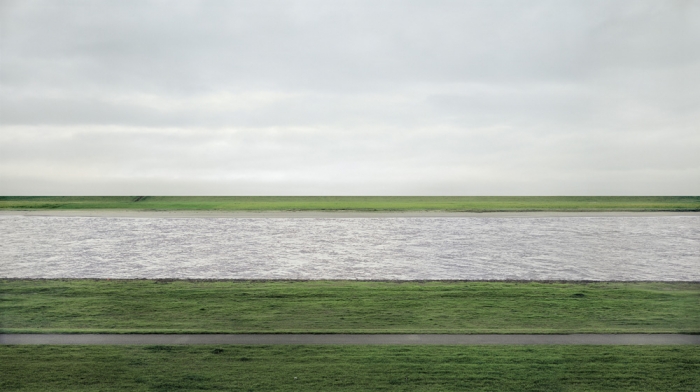
Posted By: Alex - Sun Nov 03, 2019 -
Comments (2)
Category: Overpriced Merchandise, Photography and Photographers
Champagne Vending Machine
In its latest annual gift catalog, Neiman Marcus is offering a champagne vending machine. It goes for a mere $35,000 — champagne not included.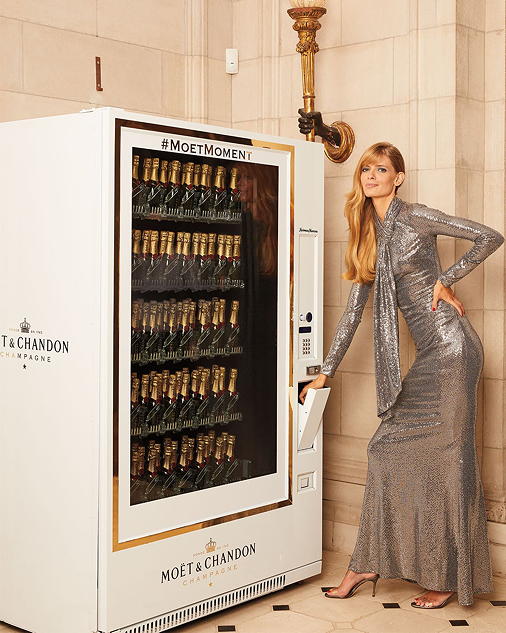
Or, better idea, buy this vending machine on eBay for $1700, and put some champagne (or another beverage of your choice) in it.
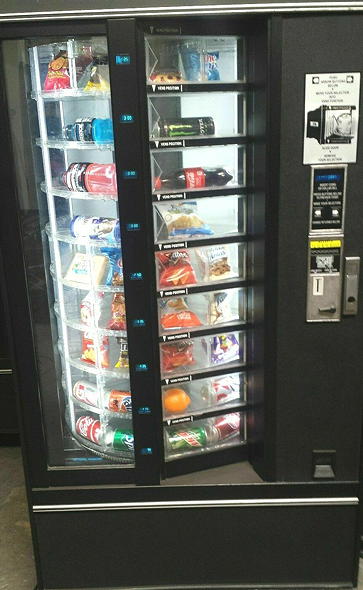
Posted By: Alex - Sun Oct 20, 2019 -
Comments (6)
Category: Overpriced Merchandise, Alcohol
Nara’s Doodles
A painting by Japanese artist Yoshitomo Nara recently sold for $24.9 million at Sotheby’s Hong Kong. This has had an inflationary effect on the value of all his works, including some doodles that he drew ten years ago, on the spur of the moment, on various walls in the Manhattan bar Niagara, where he happened to be drinking. It’s now figured that the doodles are worth hundreds of thousands of dollars. More info: CNN


Posted By: Alex - Sat Oct 19, 2019 -
Comments (0)
Category: Art, Overpriced Merchandise

| Who We Are |
|---|
| Alex Boese Alex is the creator and curator of the Museum of Hoaxes. He's also the author of various weird, non-fiction, science-themed books such as Elephants on Acid and Psychedelic Apes. Paul Di Filippo Paul has been paid to put weird ideas into fictional form for over thirty years, in his career as a noted science fiction writer. He has recently begun blogging on many curious topics with three fellow writers at The Inferior 4+1. Contact Us |




